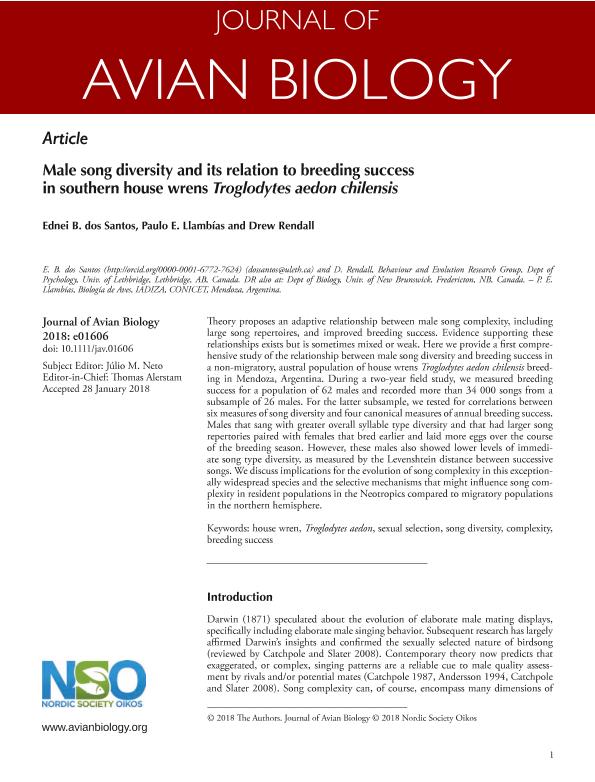Artículo
Male song diversity and its relation to breeding success in southern house wrens Troglodytes aedon chilensis
Fecha de publicación:
06/2018
Editorial:
Wiley Blackwell Publishing, Inc
Revista:
Journal Of Avian Biology
ISSN:
0908-8857
Idioma:
Inglés
Tipo de recurso:
Artículo publicado
Clasificación temática:
Resumen
Theory proposes an adaptive relationship between male song complexity, including large song repertoires, and improved breeding success. Evidence supporting these relationships exists but is sometimes mixed or weak. Here we provide a first comprehensive study of the relationship between male song diversity and breeding success in a non-migratory, austral population of house wrens Troglodytes aedon chilensis breeding in Mendoza, Argentina. During a two-year field study, we measured breeding success for a population of 62 males and recorded more than 34 000 songs from a subsample of 26 males. For the latter subsample, we tested for correlations between six measures of song diversity and four canonical measures of annual breeding success. Males that sang with greater overall syllable type diversity and that had larger song repertories paired with females that bred earlier and laid more eggs over the course of the breeding season. However, these males also showed lower levels of immediate song type diversity, as measured by the Levenshtein distance between successive songs. We discuss implications for the evolution of song complexity in this exceptionally widespread species and the selective mechanisms that might influence song complexity in resident populations in the Neotropics compared to migratory populations in the northern hemisphere.
Archivos asociados
Licencia
Identificadores
Colecciones
Articulos(IADIZA)
Articulos de INST. ARG DE INVEST. DE LAS ZONAS ARIDAS
Articulos de INST. ARG DE INVEST. DE LAS ZONAS ARIDAS
Citación
dos Santos, Ednei B.; Llambias, Paulo; Rendall, Drew; Male song diversity and its relation to breeding success in southern house wrens Troglodytes aedon chilensis; Wiley Blackwell Publishing, Inc; Journal Of Avian Biology; 49; 6; 6-2018
Compartir
Altmétricas




